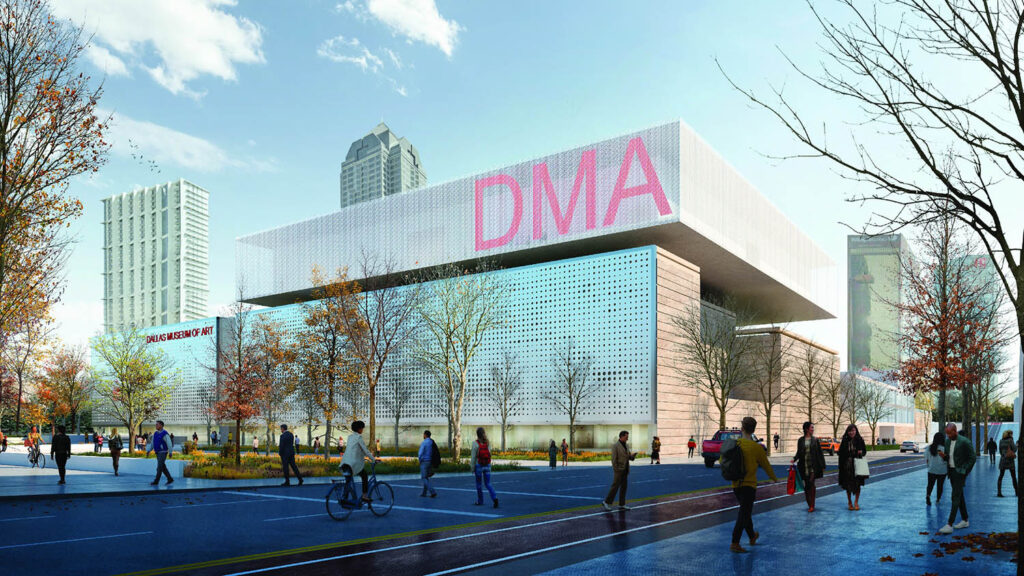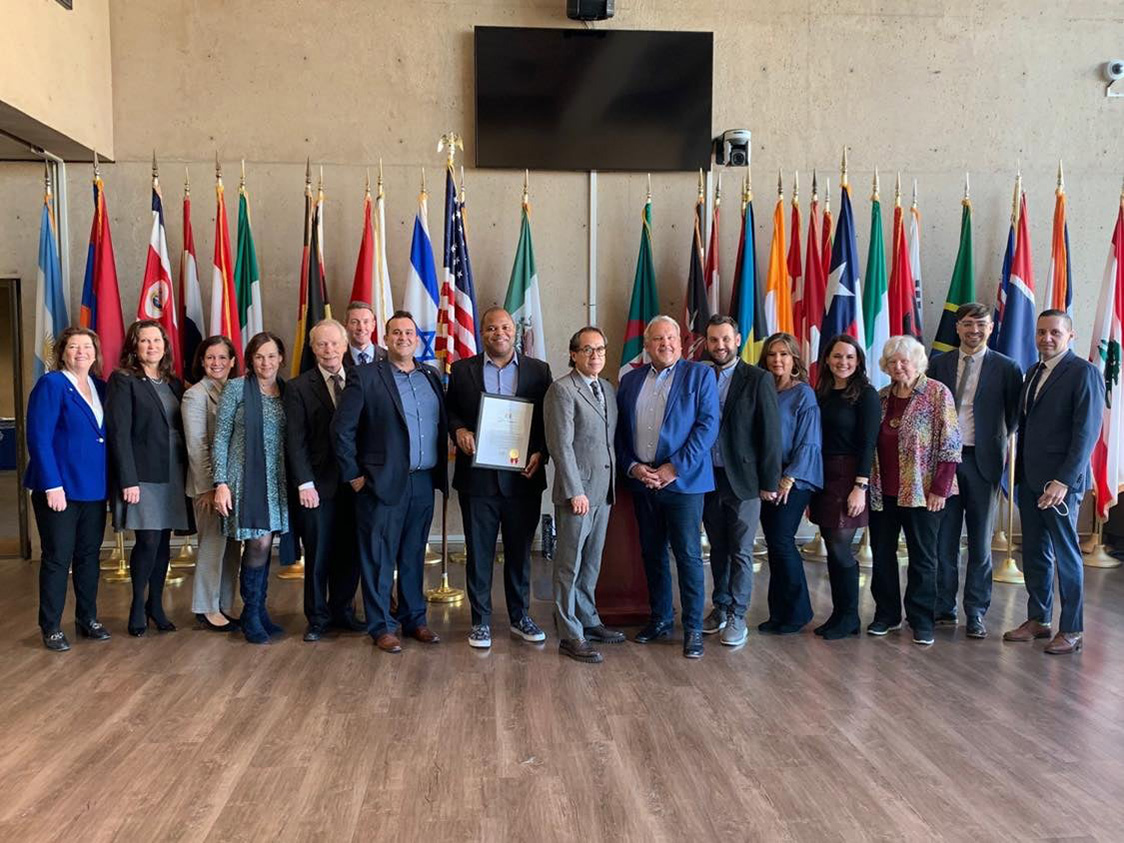Story by Lawson Martin. Photos provided by the Dallas Museum of Art.
“I believe strongly in using the power of art to bring out the best in humanity,” says Dr. Agustín Arteaga, the Eugene McDermott Director of the Dallas Museum of Art.

Throughout the past seven years, Agustín has been focusing on diversifying exhibition and educational programs at the Dallas Museum of Art to be inclusive of Dallas’ diverse communities.
Before leading efforts at the Dallas Museum of Art, Agustín was the Museo Nacional de Arte (MUNAL) director in Mexico City, one of Mexico’s largest and most prominent cultural institutions. He also served as the Director of the Museo de Arte de Ponce (MAP) in Puerto Rico and the founding Director of the contemporary art museum Museo de Arte Latinoamericano de Buenos Aires (MALBA) Fundación Costantini in Argentina.
Agustín has enjoyed organizing over 100 exhibitions throughout his career, including major monographic presentations of Andy Warhol, Roy Lichtenstein, and Diego Rivera.
Agustín became the museum’s Director in 2016, and since then, his mission has been to create a welcoming space. Agustín’s vision for the museum centers on making art accessible and inclusive for all, ensuring that visitors from diverse backgrounds feel represented.

The Dallas Museum of Art has enlarged its Curatorial Department, creating positions dedicated to Latin American Art, Islamic and Medieval Art, and Works on Paper, as well as reinvigorating the Contemporary Art Department with curators devoted to African American Art and African Diaspora and the Arts of Asia as part of that effort.
The museum director has also ensured that museum leadership reflects the city’s diversity. His Hispanic heritage and global perspective inform his art and museum management approach.
“Dallas is a diverse and energetic place where many people come to pursue opportunity,” Agustín says. “Being a transplant myself, I have come to appreciate that what we share is this idea of otherness and navigating the unknown. It makes me realize that we all want to be grounded in one place and the importance of providing common vessels that connect us all.”
Through this idea, Agustín emphasizes the power of art to connect humanity and provide a common language, a recurrent theme represented throughout the Dallas Museum of Art.
“It is up to us to use our fresh eyes and perspectives to present works and expressions through the lens of current concepts and events in a way our audiences can relate to and learn from,” Agustín says. “Often, that means presenting untold perspectives along with the traditional ones to ensure our audiences have the full picture and can grow together.”

Agustín’s Mexican upbringing and strong Latino identity have greatly influenced him. He takes pride in his education at public institutions in Mexico. He says his education paved the way for his career and cultivated his global perspective, which has been invaluable in his role as the Eugene McDermott Director of the Dallas Museum of Art.
For Agustín, it’s hard to pick a particular exhibition or program that has been his favorite during his time at the Museum of Art because he says he’s proud of them all.
“All programs and exhibitions are like your children; you’re always proud of them but for different reasons,” Agustín says.
But he says one exhibition holds a “special place in his heart.” He takes pride in an exhibition called “Mexico, 1920-1950,” which engaged the local Latino community and prompted the creation of a bilingual institution.
“Beyond that, I am proud to say the DMA has a long track record of presenting programs and exhibitions representing our diverse local communities,” Agustín says. “From featuring the incredible Dallas-based artist Ja’Tovia Gary to our recent refresh of our Indigenous American Art Galleries, I am particularly passionate about celebrating the diversity of our constituents through art.”
As National Hispanic Heritage Month is celebrated, Agustín highlights an artist who inspires him, Abraham Ángel, who was a Mexican queer artist. This artist’s work is currently featured in the museum’s gallery “to inspire us all,” according to Agustín.

“Living in a society that was not ready for him, Ángel suffered harassment and discrimination during his lifetime, but his art embodies joy and vivacity while tracing Mexico’s transformation from rural to modernized,” Agustín says.
Agustín believes Abraham’s life serves as a reminder of all individuals’ need for acceptance and support. He encourages artists to find their own space of joy and support those who may be different from themselves.
Looking ahead, the Dallas Museum of Art is undergoing some exciting changes, including a potential reimagined building and an expanded collection of contemporary art.
“This is a very exciting chapter in the DMA’s history,” Agustín says.
Agustín recognizes that Dallas-Fort Worth is changing by the minute.
“The success of the Metroplex is such that it will soon be the third largest in the country,” Agustín says. “Just as we catalyzed the Dallas Arts District when our current facility opened in 1984, the DMA sees this moment in time as our opportunity to once again play a significant role in shaping the future of Dallas.”

Along with the reimagined building, Agustín says the Dallas Museum of Art is moving closer to the day when they can unveil a new identity and “potentially the most significant collection of contemporary art of any encyclopedic museum.”
In August, museum leaders announced that Nieto Sobejano Architectos won the museum’s international design competition to reimagine the Dallas Museum of Art. Now, plans are underway to bring this vision to life.
“We look forward to bringing to life a new version of the Dallas Museum of Art in the coming years that includes more space for community programming, green space, and space to display our incredible collection,” Agustín says. “Most importantly, we look forward to bringing to life a version of the DMA that will help usher in the next chapter for Dallas.”
Agustín’s tenure at the Dallas Museum of Art has been marked by a dedication to inclusivity and diversity, ensuring the museum serves as a beacon for art and culture for people in Dallas and beyond.
Sign up with your email address to receive good stories, events, and volunteer opportunities in your inbox.
Notifications